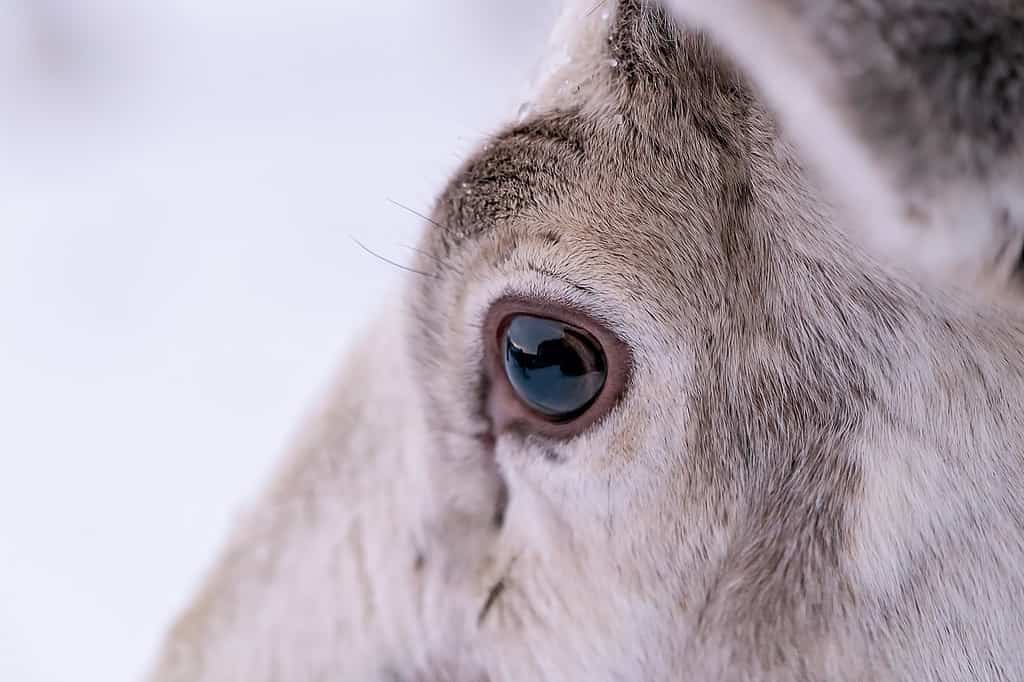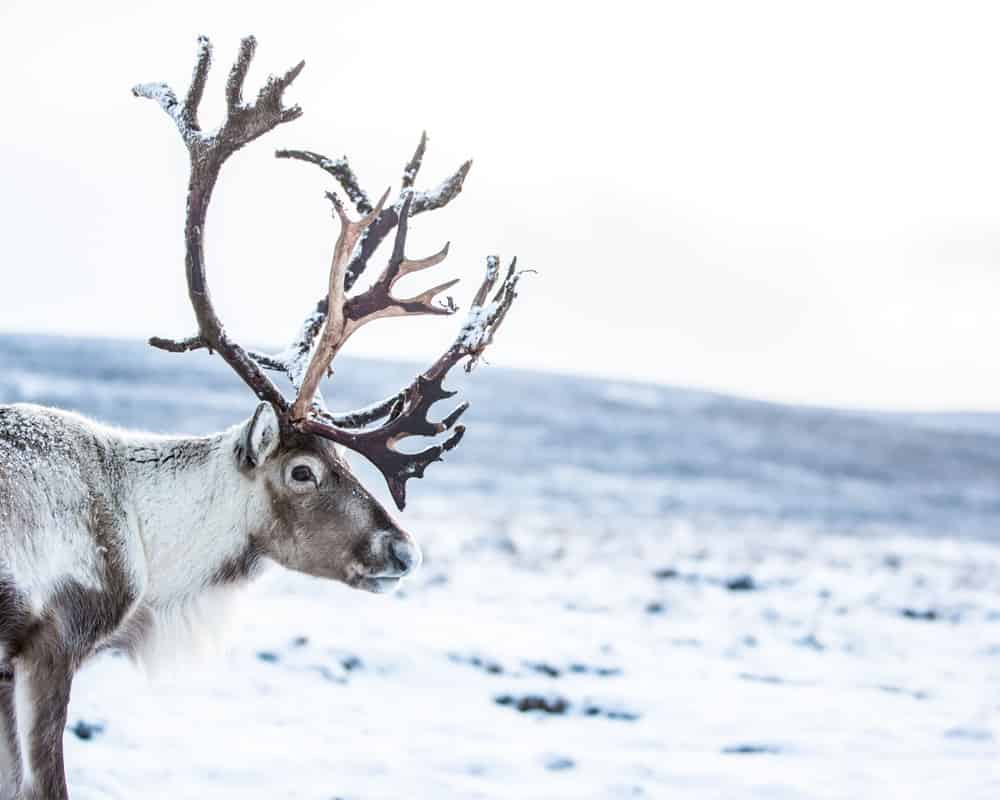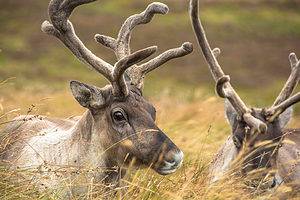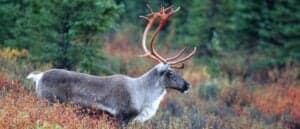Reindeer – or caribou (Rangifer tarandus) – are a widely-celebrated deer species. The winter season always brings more talk of reindeer because of Christmas – a holiday in which several of these beautiful creatures pull Santa Claus’s sled all over the world to deliver presents in just one night. You don’t have to celebrate Christmas to know about or love reindeer. In fact, reindeer are famous for a lot of other things. In Mongolia, one of the smallest ethnic minority groups on Earth spend their days with these deer. The Dukha people – or Tsaatans – are a group of reindeer herders that live in northern Mongolia. They could probably tell you a lot about the cultural significance of reindeer in their region. What do we know about reindeer? Did you know that both males and females grow antlers? Did you know that their feet click when they walk as a result of a tendon passing over a bone when it moves? What about their vision? Did you know that reindeer eyes turn blue in the winter?
Today, we’ll take a closer look at this strange phenomenon. We want to share how and why it happens.
Where do Reindeer Live?

Portrait of a reindeer with massive antlers pulling sleigh in snow, Tromso region, Northern Norway.
©pawopa3336/iStock via Getty Images
Reindeer are native to the Arctic tundra, which spans Canada, Alaska, Russia, Northern Mongolia, Scandinavia, Greenland, and parts of Iceland. They also inhabit the far-northern boreal forests that rest next to the Arctic tundra. As a result, they have developed a number of adaptations that help them survive and thrive in the Arctic Circle. One of these adaptations is in their vision, and it occurs as a reaction to a change in light during long winters. Reindeer eyes are unique. We do not know of any other animal that seasonally changes the color of its eyes. Let’s take a look at the environmental factors that impact this change.
Winters in the Arctic Circle

During the deepest parts of winter, only the Northern Lights (Aurora Borealis) illuminate the skies in this Arctic boreal forest.
©Yevhenii Chulovskyi/Shutterstock.com
Arctic winters are unique and consist of a lot of darkness. During the autumn and winter months, there is never true daylight. Instead, the sun sinks below the horizon when summer ends, resulting in an extended twilight that lasts for several days, weeks or months. The length of this twilight depends on where you are in the Arctic Circle. The first stage of twilight is civil twilight. This is the brightest form of twilight. Have you ever sat in the fading glow of a sunset, or risen just before the dawn to watch the sky pale for the sunrise? This is civil twilight. After civil twilight comes nautical twilight, and then astronomical twilight.
When astronomical twilight ends – about mid-November at the North Pole – true darkness falls. The Arctic Circle will rest in complete darkness for at least two months -sometimes three – before the twilight cycle begins again. Night that lasts for more than 24 hours is called Polar night, and it only occurs in the northernmost and southernmost regions of Earth. ]In the Arctic Circle, there is very little light for up to six months out of every year. Through evolution, reindeer adapted to be able to see in this environment.
Why do Reindeer Eyes Turn Blue?

It can be hard to visually tell the difference between the summer and winter eyes of reindeer, but the reindeer experiences a drastic change in its vision.
©pawopa3336/iStock via Getty Images
Reindeer have adapted their vision – and much more – to survive the long darkness of Arctic winter. Specifically, these incredible caribou adapt their vision for twilight. The fading rays of sunshine that produce twilight are much different from other light on Earth. When the sun drops below the horizon, the ozone layer filters and absorbs much more light. In fact, the only light that makes it to the Earth’s surface during twilight is blue light. In order to be able to see, reindeer eyes go through a drastic change.
The tapetum lucidum is a reflective region of the eye that rests behind the retina. It essentially reflects light back toward the retina. The photoreceptors in the retina then have a second chance to absorb and process light. Maybe you’ve seen this phenomenon. It doesn’t occur in humans, but many other animals have a tapetum lucidum. Have you seen the eyes of a dog, cat, deer, or raccoon seemingly glowing at night when light passes over them? This is the work of the tapetum.
The fibers of the tapetum are blue-green in color and composed of collagen. In the twilight and darkness of winter, reindeer eyes are permanently dilated. This extended dilation creates ocular pressure, which pushes these collagen fibers closer together. The reflective quality of the tapetum changes as the collagen fibers pack tightly against each other. Instead of reflecting yellow wavelengths, they reflect blue light. Since this is the only light that exists in twilight, the eye can process it better. In fact, reindeer eyes become more than one thousand times more sensitive to light after this change.
How Does This Help?

Reindeer rely on their evolutionary advantages in the harsh Arctic tundra.
©Rezu_07/Shutterstock.com
With the increased sensitivity to light that this phenomenon provides, reindeer can pick up even the smallest of reflecting blue wavelengths of light in their environment. Any light that does make it through the ozone bounces off the world around it. The dilated and sensitive eyes of a reindeer during this season can process this light to provide significantly improved night vision. This allows them to forage for food and to avoid predators. Vision is not always imperative for survival, but this physiological adaptation greatly assists reindeer in their day-to-day lives when winter falls.
The photo featured at the top of this post is © Vladimir Melnikov/Shutterstock.com
Thank you for reading! Have some feedback for us? Contact the AZ Animals editorial team.






